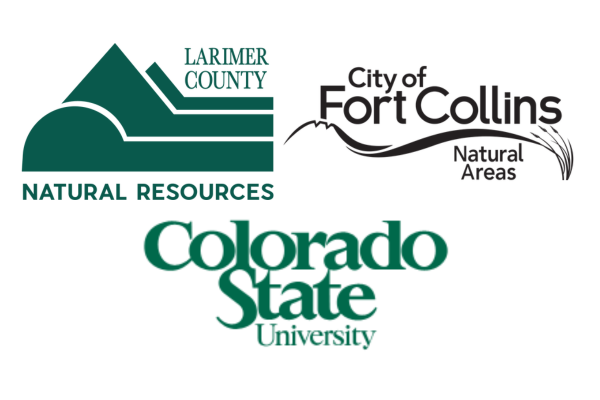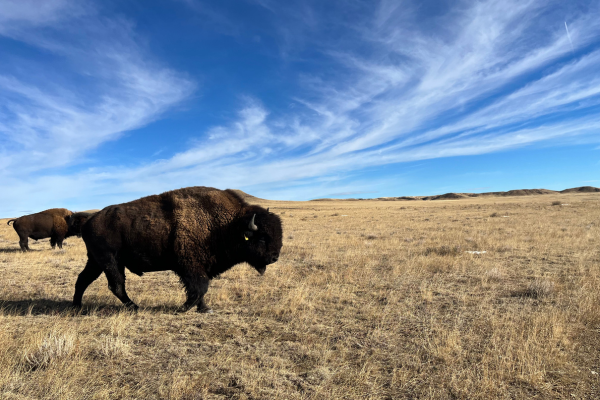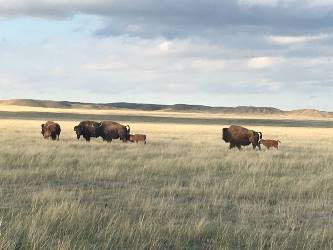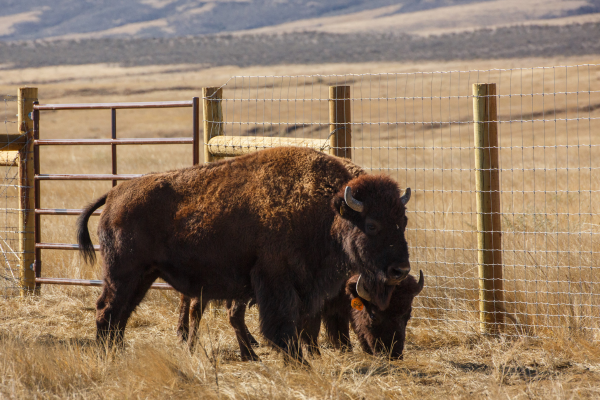Laramie Foothills Bison Conservation Herd#

Bison were reintroduced in 2015 to Soapstone Prairie Natural Area and Red Mountain Open Space through a partnership between:
- The City of Fort Collins Natural Areas Department
- Colorado State University (CSU)
- Larimer County Natural Resources Department
The Laramie Foothills Bison Conservation Herd now roams across approximately 2,700 acres of Soapstone Prairie. This herd is important to national conservation efforts and the health of the shortgrass prairie habitat.
Herd History and Reintroduction#

For thousands of years, the iconic American bison roamed the Great Plains by the millions until overhunting brought the species to near extinction. As part of a nationwide recovery effort, this keystone species was reintroduced in 2015 to Soapstone Prairie Natural Area and Red Mountain Open Space. Species reintroductions are possible thanks to voter support of sales tax ballot measures funding land conservation and stewardship, thank you!
How can I see the bison?
Bison may be visible from their pasture at Soapstone Prairie Natural Area (open seasonally March through November). They can be seen from the Cheyenne Rim trail and the Bison overlook. Since the bison pasture is 2,700 acres, they may not be visible. Stay on the trails and roadway and do not approach the pasture to keep you and the bison safe.
Bison Conservation#

The Laramie Foothills Bison Conservation Herd is unique as it has successfully addressed three key challenges to bison conservation: genetics, disease and habitat. The bison of the Laramie Foothills Conservation Herd are descendants of the Yellowstone National Park herd, notable for its valuable and unique genetics. However, the Yellowstone herd also carries brucellosis, a devastating disease to cattle that has been eradicated elsewhere in the United States. Assisted reproductive technology from Colorado State University created disease-free embryos and offspring that preserve the Yellowstone herd genetics. This allowed the genetics of the Yellowstone herd to no longer be restricted to that area. Currently, both natural breeding and the use of assisted reproductive technologies are used in the herd. Due to the success of these efforts, nearly 100 bison have been rehomed to tribal, federal, and private conservation herds.
Grazing#

Bison play a critical role in maintaining the large, conserved areas of nearly pristine shortgrass prairie at Soapstone Prairie Natural Area and Red Mountain Open Space. The bison help maintain plant diversity by grazing.
- Why are cattle also used? Cattle will continue to graze seasonally at Soapstone Prairie because they achieve conservation targets by mimicking native grazers and provide flexibility in how and where this beneficial disturbance can be used.
- What stops the bison and cattle from interacting? A specially constructed fence contains the bison herd and excludes cattle while also allowing wildlife passage.
Learn More#
- Bison Management Plan, 2018
- Soapstone Prairie Natural Area Management Plan, 2022
- Bison baby delivered at CSU article and video
- CSU SOURCE articles on bison sent to tribes, 2022 and 2023
- Buffalo Healing, Denver Zoo article